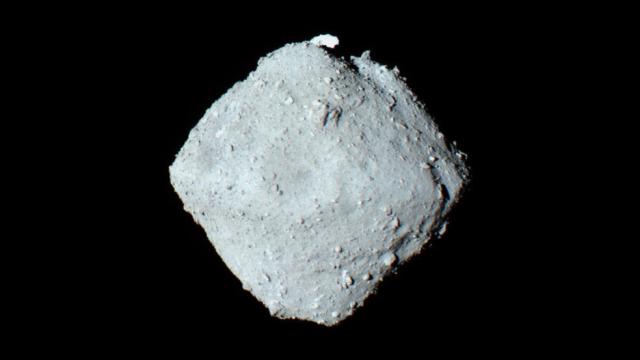Earthlings often get nervous (or get their hopes up) about asteroids careening towards Earth. Such is the case this week, as headlines trumpet the danger of a “potentially hazardous” asteroid the size of the Space Needle along with four other space rocks. Fortunately for the worry-warts and unfortunately for nihilists around the world, the latest crop of Near Earth Objects are not the threats to ending life as we know it the headlines make them out to be.
The next five asteroid appearances noted on NASA’s Jet Propulsion Laboratory website include rocks ranging from the size of a small house to that of London’s St. Paul’s Cathedral. But their approaches are “near” on an entirely different scale than the one you might be familiar with. The biggest asteroid, known as 2021 KT1, is expected to pass within 7.4 million kilometres of Earth, posing no risk whatsoever. For comparison, the Moon is about 384,633 kilometres away.
Just in case you were getting your hopes (or worries) up, NASA has noted that “[n]o known asteroid poses a significant risk of impact with Earth over the next 100 years.”
As previously reported by Gizmodo, NASA’s definition of “potentially hazardous” is much broader than our everyday understanding of that term. It merely means that the asteroids are worth keeping an eye on, like any car in your general vicinity on the highway. Yet in recent days, a slew of stories led with the salvo of space rocks, and not the salve that they’re just passing through.
“It really has to do with what ‘potentially’ means,” Matthew Holman, director of the International Astronomical Union’s Minor Planet Centre, told Gizmodo in 2018. “It’s something that in the distant future could possibly impact the Earth but doesn’t necessarily mean something about what’s happening today.”

The “hazardous” part of the term also applies to their size; smaller space rocks will fizzle out on entry to the planet, while others may break up and land anywhere from an English driveway to a Turkish homestead. These falls are so frequent that NASA’s fireball reports database looks like the galaxy of phosphenes that appear in your vision after rubbing your eyes. By NASA’s measure, hazardous asteroids are big enough that they would cause some damage on the ground if they actually did strike the Earth; they need to be about 152 metres across to get that fearsome label.
According to NASA, the asteroid with the highest chance of impact is 2009 FD, which has less than a 0.2% chance of hitting Earth in 2185. The agency’s Sentry Impact Risk Table is constantly vigilant to such far-off objects, measuring their hazard risk, while other telescopes are on the lookout for Near Earth Objects or those passing within roughly 48 million kilometres of Earth’s orbit. More than threats, some of these asteroids can have useful research implications, such as the near-Earth asteroid named Ryugu, recently visited and sampled by JAXA’s Hayabusa2 spacecraft.
So unless you have an extraterrestrial death wish, you can rest easy. And if you’re in the former group, you’ll have to be patient on a centuries-long timescale, and even then, you’d have to be both lucky and in the right place. There are far more likely (and nearer) threats to human existence anyways.
